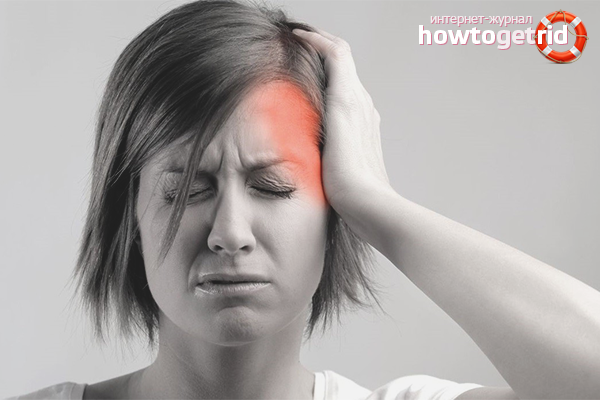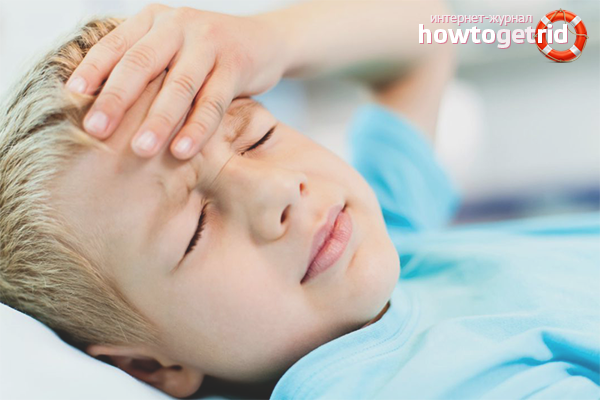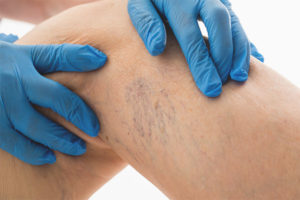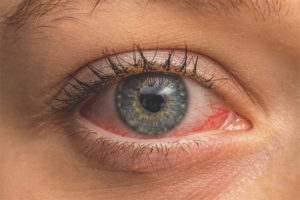The content of the article
Concussion is a very common traumatic brain injury. Concussion is damage to the vessels of the brain, resulting in a short-term loss of consciousness. Such an injury can happen to every person - during sports, during a fall, accident or a sharp blow. Very many neglect concussion, especially a lung, transferring a state "on legs". Indeed, a minor concussion can be confused with a bruise, however, the lack of quality treatment can lead to long-term consequences and complications. In this article, we will talk about concussion - how to recognize it yourself and what to do after getting injured.
How to recognize a concussion
It is very important to know the symptoms of this trauma, since it is the person and his relatives who decide on the necessary hospitalization. Here are some signs that may indicate a concussion, and symptoms may occur immediately after injury, or after a few hours or even days.
- Fainting. Immediately after an injury, a person can lose consciousness, a similar condition can last from several seconds to several hours. This occurs against the background of circulatory disorders in the brain, as well as due to powerful nerve impulses. At the same time, a person, even having regained consciousness, may still be in a stupor for some time — not to respond to external stimuli, not to understand what is happening. A couple of hours after regaining consciousness, some inhibition in behavior and speech may be observed.
- Dizziness. After receiving an injury, a person begins to experience a headache that is sharp, crushing, bursting or dull, a person may hear tinnitus or see flies in front of his eyes. Dizziness is associated with an increase in intracranial pressure. The pain is usually localized in the neck or in the area of injury.
- Nausea and vomiting. Very often, when injured, a person may feel nauseous, he begins to vomit, as a rule, once. In difficult cases, when the concussion is very serious, vomiting does not stop for a long time. This is due to the fact that the work of the nerve endings that are responsible for the gag reflex is disrupted in the brain.
- Heart rate change. After an injury, the pulse may slow down or, conversely, accelerate. This occurs due to many factors - the cerebellum is compressed, intracranial pressure rises, hypoxia develops.
- Discoloration of the skin. Often, against the background of a concussion, a person becomes either pale, or, conversely, red. This occurs against the background of disruption of the blood vessels - they expand and contract.
- Pain in the eyes. Ask the person to look away, to look up. Increased intracranial pressure makes these movements difficult, painful.
- Loss of coordination. With complex shaking, a person cannot stand on his feet, falls, does not maintain balance, or feels that his body is not listening. There are two reasons for this. The first is a violation of blood circulation in the vestibular apparatus. The second is a malfunction of nerve impulses that transmit information from the brain to muscle fibers.
- Pupils. Immediately after receiving an injury, especially if a person has not yet regained consciousness, you need to consider his pupils. If they are greatly enlarged or excessively narrowed, it is most likely a concussion. If the pupils are of different sizes - the situation is very serious, you need to urgently go to the hospital.
- Tendon reflexes. This is usually done by a doctor, but you can also conduct an experiment to confirm or refute the diagnosis. You just need to lightly hit the hammer with the elbow and knee tendons, if the limbs are bent with different amplitudes, this is a consequence of a concussion.
There are three degrees of concussion. A mild degree is characterized by a slight loss of consciousness, blood from the nose, nausea, and vomiting may appear. Typically, the patient's condition returns to normal after 20 minutes after the injury. The average degree of concussion is more serious - the patient loses consciousness for more than 15-20 minutes, he cannot stand on his feet, cannot speak coherently, is not oriented in time and space, expresses psychophysical inhibition. A severe concussion is not always characterized by prolonged loss of consciousness. With this diagnosis, a person loses memory, many cognitive functions decrease, he quickly gets tired, sleeps poorly, loses his appetite.
Why is concussion dangerous?
This is one of the few types of injuries that may not occur immediately, but after a few days or even months. Among the long-term effects of a concussion, photophobia can be distinguished - it develops due to a violation of the reflex abilities of narrowing and dilating the pupil. In addition, an untreated concussion can lead to high sensitivity of sounds - a person is afraid and can not stand loud noise. Violation of cerebral circulation leads to problems with sleep - insomnia, nightmares, a person can not get enough sleep. Often, a concussion becomes the cause of neuro-emotional disorders, a person develops fear, anxiety, panic attacks, depression, and the patient is more susceptible to stress. Strong tremors can lead to memory loss, and a person forgets those events that occurred immediately before the injury. The stronger the concussion, the greater the time period that falls out of memory. In the long run, a person with a concussion can lose concentration, cannot perform long-term monotonous work, cannot stand some types of mental stress that were familiar to him before the injury. This is due to a violation of the connections of the cerebral cortex with the subcortex.
How to determine a concussion in a child
It is much more difficult to diagnose concussion in children, since the child of the first years of life cannot tell about the nature of his symptoms. In general, children often fall and their risk of injury is much higher. However, nature provided for everything - in children, the bones of the skull are not only strong, but also more mobile. For example, at birth, two halves of the skull box enter one another slightly, so that the baby’s large head can pass through the birth canal. In the same way, the bones of a child’s skull respond to shock - mobility and elasticity protect the head from damage. Very young children have a fontanel, which does not grow up to a year. This is also a kind of protection - upon impact, the soft part of the fontanel protrudes, not allowing it to increase intracranial pressure.
If the child fell and hit his head, you need to watch him for some time. Pallor, vomiting, drowsiness, nosebleeds, pupil divergence, headache, frequent breathing - all these symptoms indicate that you need to immediately go to the hospital. Various procedures are used to make a diagnosis - radiography, computed tomography, fundus examination, encephalography. In many cases, it is better to take the child to the doctor and make sure that everything is fine than to be guessed and subsequently receive long-term complications of the injury.
In case of a concussion, first aid should be provided - to lay a person on a horizontal surface, to raise his head. Do not allow a person to sleep in the first hour after receiving an injury.If a person is unconscious, he should be put on his side so that he does not choke on the vomit, because vomiting can occur even in an unconscious state. Next, you need to attach ice or a cold wet towel to your forehead and temples, and quickly send the patient to the hospital.
Concussion treatment is a long and complex process, which includes the restoration of the normal functioning of the blood vessels of the brain, the use of analgesic and sedative drugs, tranquilizers, nootropic drugs. But the most important thing is a long bed rest, which will help restore health without the risk of complications. Take care of yourself and consult a doctor on time!
Video: what happens with a concussion











Submit